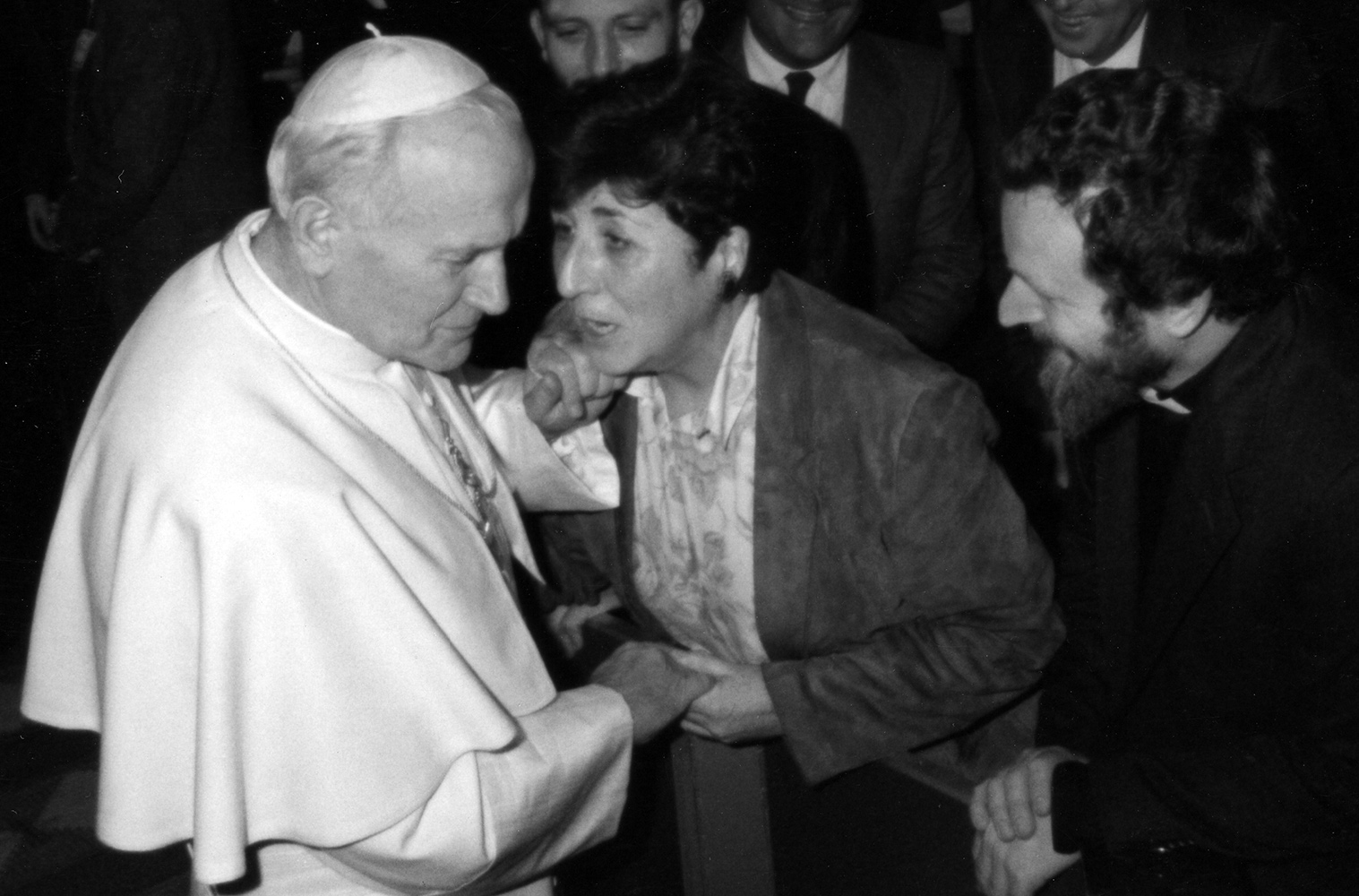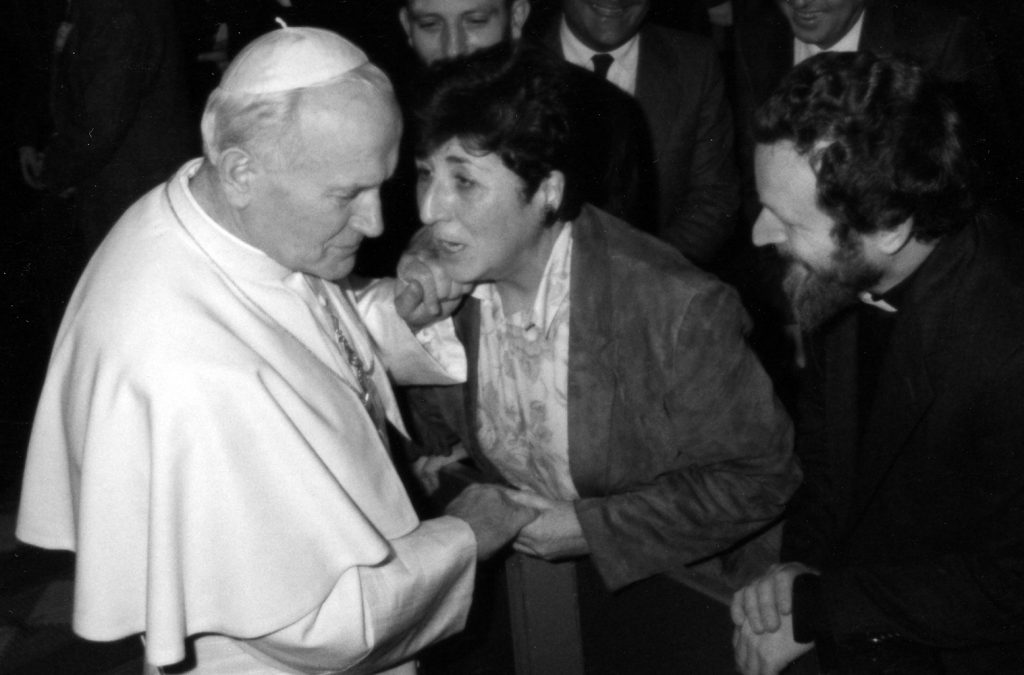VALENCIA (1956-1960)
Carmen wanted to respond to the call that the Lord had made to her since she was a child. With St. Francis Xavier as her point of reference, and desiring to go on mission, she made several unsuccessful attempts at the Congregation of Jesus and Mary in Madrid.
At the age of 23, after studying chemistry, she went to Javier (Navarra) to enter a missionary Institute: the Missionaries of Jesus Christ, founded by Fr. Moisés Domenzain SJ, Mother Camino and two other companions, and supported by D. Marcelino Olaechea, Archbishop of Pamplona and later of Valencia. After her novitiate and temporary vows in 1956, Carmen left to study theology at the Sedes Sapientiae in Valencia, “the science of humility and love”, as she would say. Carmen lived in Valencia from October 1956 to October 1960.
The Missionaries had opened a house in Valencia shortly after D. Marcelino was transferred from Pamplona to Valencia.
During the 1956-1957 school year, Carmen was in charge of the Missionary Sisters’ house at 8 Viciana Street, doing humble work in the house and ironing sheets.
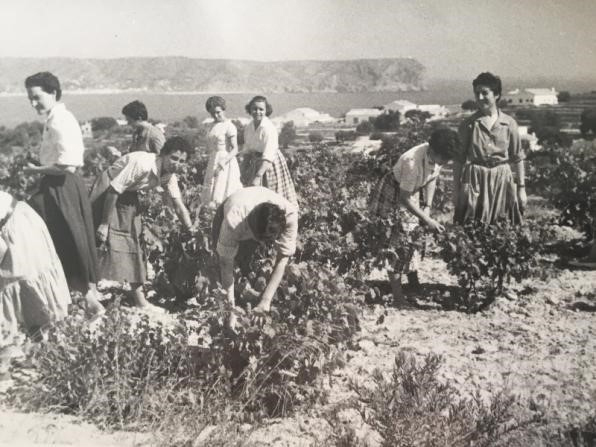
After the “Flood” of October 1957, she enrolled and studied theology. Carmen soon began to stand out in her relationship with Don Marcelino because of how surprising, spontaneous and lively her relationship with him was. This is reflected in the unexpected visits that Carmen made to the Archbishop’s Palace, together with her roommate, Mª Ángeles Sagristá, who recalls: “We, as Carmen was like that, when we left class, we went to the Palace a lot of times, we would sneak out, and then, as the Father had these visits and problems, we would go to D. Joaquín, D. Joaquín’s secretary. Joaquín, D. Marcelino’s secretary, and D. Joaquín would say “wait for us, wait for us”, he would let Father know when one of the interviews he had came up, and then we would go to Father, and in the end we would make his life happy, with those problems he had, he would give us his blessing, we would laugh with him, and that was it. And we did that for many, many days.”
Carmen will grow in esteem for Don Marcelino. “My Jesus, at the side of a saint”, she will write while in Valencia.
Carmen will write 41 letters (including Christmasgreetings) to Don Marcelino. Marcellin, in turn, will write 17 letters to Carmen.
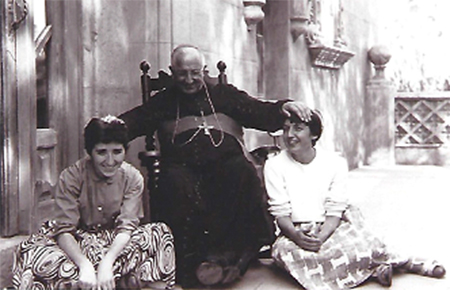
Carmen will renew her temporary vows in Valencia on October 3, 1959.
Carmen finishes her theological studies in Valencia and receives the reward of going by train to Rome with the diocesan delegation of Valencia to the canonization of Archbishop Blessed Juan de Ribera with another sister on June 12, 1960.
She will write her thesis on “The need for prayer according to Pius XII”, obtaining the qualification of Summa cum Laude on October 1, 1960.
After her studies in 1960, Carmen perceived the need for all the formation efforts of the Missionary Sisters to be directed towards the people of TODAY. And she brought out all her theological, philosophical, historical and scientific armament to convince some sisters of the Institute of the need to update themselves. The Council has not yet begun. But she has learned from very good teachers at the Sedes Sapientiae Institute. When she met Fr. Farnés in Barcelona in 1962, she became even more aware of the need for renewal, and even more so when she learned about the Dogmatic Constitutions of the Second Vatican Council. She will say: “Here in Valencia I have had immense graces that I hope will multiply for you”. “I’ve been all along the coast, the Peñon de Ifach, everything. Valencia is wonderful, impressive, geographically stupendous”.
When Carmen returns to Valencia, where she has an ex-missionary friend, Amparo Llinares, she will only want to go see if there is a statue of Marcelino Olaechea in front of the archbishop’s palace.
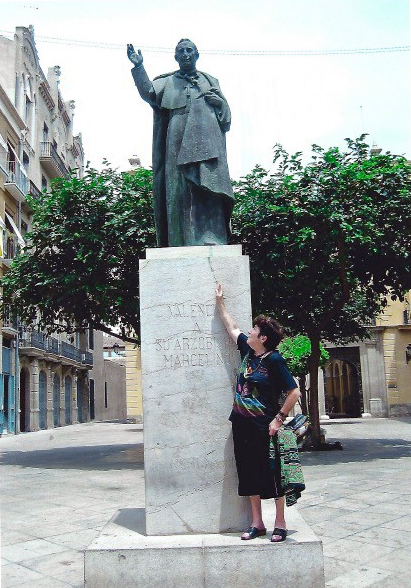
Places to visit in Valencia
The walking tour can start at the Torres de Serranos, from which you go along the street of Count (Comte) de Trènor to Salvador street and then to Viciana street, where there is a small square. Carmen lived at number 8. Near her residence are: On Trinitarios street, the Church of the Savior and the Faculty of Theology. Also nearby: the Basilica of the Virgen de los Desamparados, the Plaza de la Virgen, the Cathedral of Valencia, (where the chapel of the Holy Chalice of the Lord’s Supper and the tomb of Don Marcelino Olaechea are located), the Archbishop’s Palace where Marcelino Olaechea lived and the statue that was erected in 1978 in his honor.
Calle Viciana 8 The house of missionaries was dedicated to St Joseph. It was founded in 1947. The missionaries lived there until 1971. Carmen lived in Valencia, from October of 1956 to October of 1960.
Iglesia del Salvador Carmen prayed in this church and its Christ, located in the High Altar, stands out above all. According to tradition, he appeared in Valencia on November 9, 1250, going up the Turia River against the current.
Department of Theology At 3 Trinitarios Street, the same street as the Church of El Salvador. It is where she received the classes of the Sedes Sapientiae Institute, which was a Faculty of Philosophy, Dogma and Morals, a branch of the Regina Mundi Institute in Rome.
About these studies she will say: “When I was studying theology here, [Marcelino Olaechea] proposed that women, nuns and all those who wanted to, could study all the theologies that priests know, and he appointed the best professors there were in everything: for theology he appointed Father Sauras, a Dominican who was one of the best in Spain and who was at the Council; Father Llameras, for spirituality, who was another fantastic and saintly Dominican”.
Basílica de la Virgen de los Desamparados On several occasions, she visited the Basilica of the Virgen de los Desamparados (feast: second Saturday of May). On one occasion, she wrote in her Diary: “Dulcísima Mater desertorum, desertorum, desertorum. You, only you, you alone, Sweetest, Sweetest, Sweetest Mater desertorum are going to shelter me in your prudence, most secret, Sweetest. Shelter me waiting for the Holy Spirit. To speak quietly with your “sweetest” grace (Saturday, May 9, 1959).
Mater desertorum means Mother of the Forsaken. In 1923, shortly after the Pontifical Coronation, the Diocese of Valencia was granted the inclusion of the invocation “Mater Desertorum” in the Lauretan Litanies that are prayed in the Rosary after the invocation Mater Boni Consilii.
The Cathedral On many occasions she went to the cathedral. Besides visiting the Holy Chalice of the Supper in its chapel, you can visit the tomb of Marcelino Olaechea, who had a very close relationship with Carmen.
Archbishop’s Palace In the Palau square there is a statue erected in gratitude to D. Marcelino Olaechea right in front of the archbishop’s palace that Carmen often frequented to visit Don Marcelino and his secretary D. Joaquín Mestre, with whom she maintained a close friendship.
Other places of Valencia
The Carthusian monastery of Porta Coeli, where Carmen went on an excursion with the Missionaries in June 1958.
Alcalalí, a town in the province of Alicante, belonging to the Diocese of Valencia, where Don Joaquín Mestre, Don Marcelino’s secretary, was born. The Missionaries went there on an excursion with Don Marcelino. There they visited the hermitages of the Virgen del Calvario and San Juan de Mosquera de Alcalalí in January 1960. They also went to Cabo de la Nao in July 1958; to La Pobleta in July 1959, both places near Alcalalí. They also went on excursions to Játiva (Xátiva) and Bañeres (Banyeres), to the Peñón de Ifach. It will be in Javea or Xabia (Alicante) where Kiko and Carmen will celebrate Easter 1968 in a church in the shape of a boat called Nuestra Señora de Loreto.
